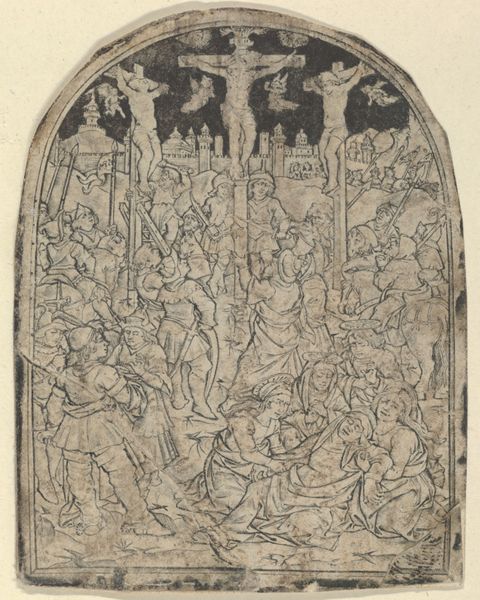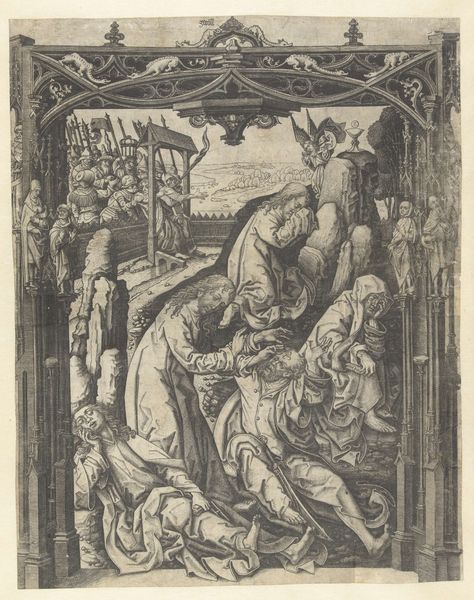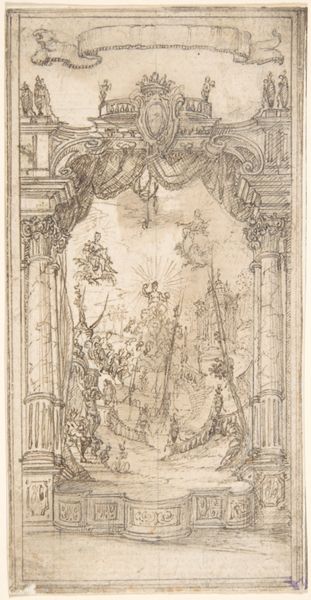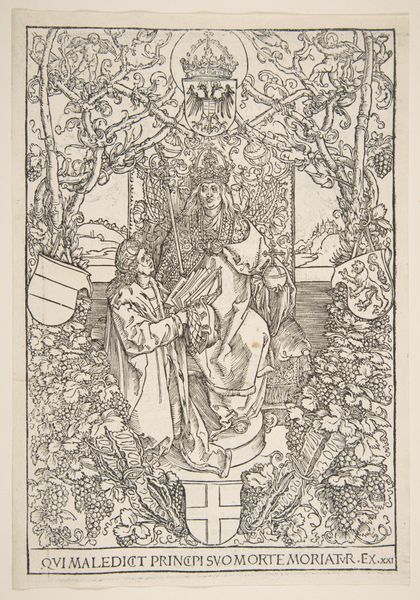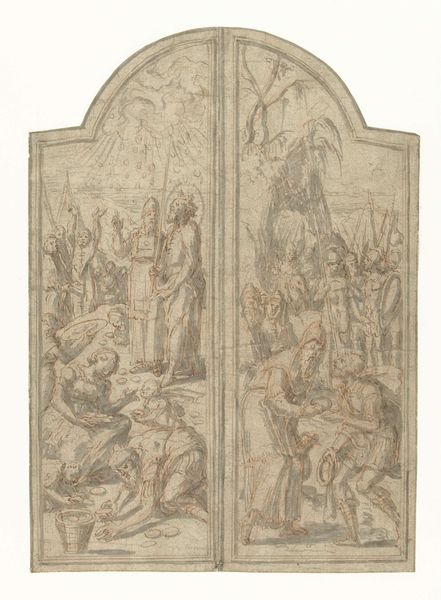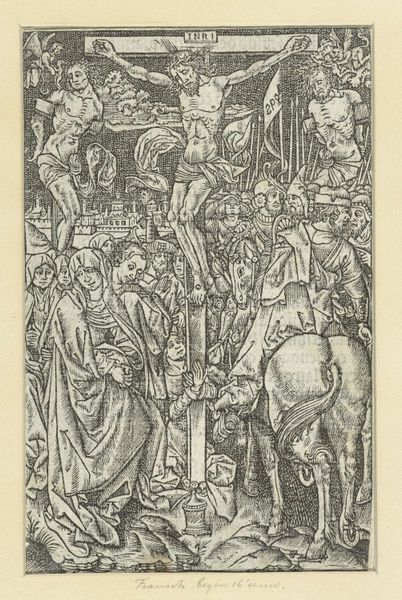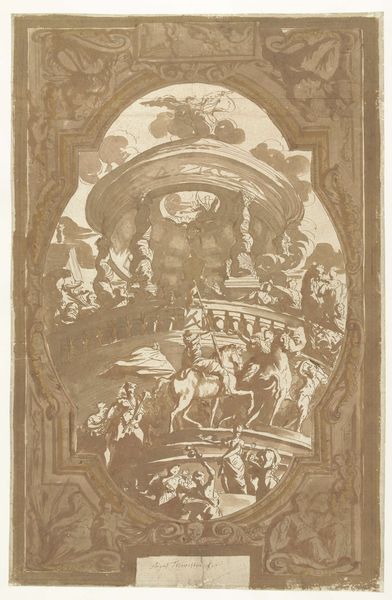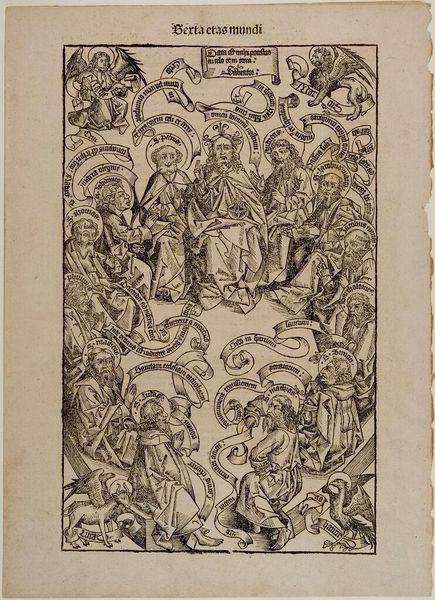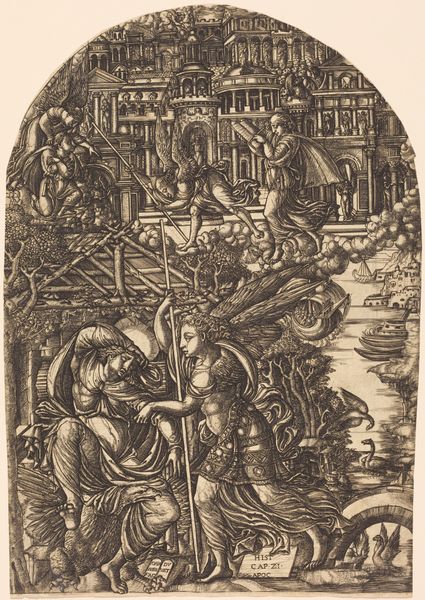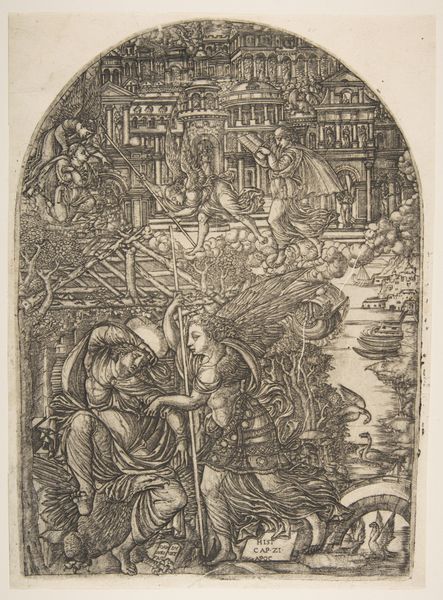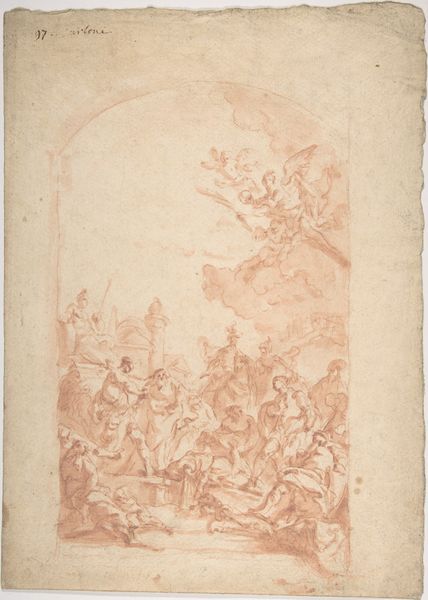
The Upper Section of the Column of Arcadios in Constantinople 1559
0:00
0:00
drawing, print, etching, relief, ink
#
drawing
#
ink drawing
# print
#
etching
#
relief
#
classical-realism
#
etching
#
figuration
#
ink
#
ancient-mediterranean
#
history-painting
Dimensions: 292 mm (height) x 217 mm (width) (bladmaal)
Curator: Good morning. Editor: Thanks for meeting with me! I'm eager to discuss Melchior Lorck's "The Upper Section of the Column of Arcadios in Constantinople," created as an etching in 1559. What immediately strikes me is how the composition coils upwards. The figures almost seem to be ascending or spiraling out of the frame. How would you interpret the way the lines create such an active space? Curator: Note how Lorck, using etching, effectively simulates the effect of relief sculpture. The precision and density of line work create a remarkable illusion of depth and texture. Look closely at the arrangement of figures; notice their orientation and how they relate to one another. Are they evenly distributed? What does their placement imply about the story being told? Editor: They don’t seem evenly distributed. At the bottom, there are chaotic battle scenes with horses. As you move up, you see fewer people, they appear calmer and more organized. Curator: Precisely. The artist masterfully contrasts chaos and order within this tightly bound cylindrical composition. And what of the texture, achieved through varying line weight and density? Editor: Now that you mention it, I notice that the bottom is dense with thick, dark lines and a strong value contrast, but it gets thinner as we move up, creating an aerial perspective, as if these figures are in a closer plane than the figures below. Curator: You are grasping the semiotics of Lorck's method. Consider, too, the medium. Why choose etching to depict a massive stone column? Editor: Perhaps it was to make the grandeur and detail accessible on a smaller, reproducible scale. Focusing our attention on specific portions instead of the whole column, while alluding to its grand, monumentality? Curator: Excellent insight. It seems Lorck uses the printmaking to mediate space, scale and texture to highlight an ancient, and now partially ruined, world. A fascinating interplay of form and concept!
Comments
No comments
Be the first to comment and join the conversation on the ultimate creative platform.
